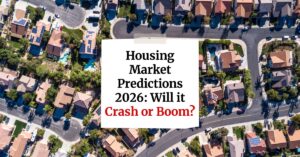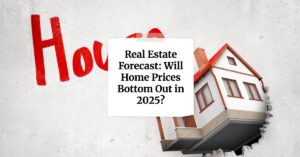Imagine this: you've just closed on an investment property, and instead of a pile of repair bills and a vacant unit, you're already collecting rent. That's the powerful promise of turnkey real estate investing, and it's absolutely possible to earn cash flow from day one. This isn't about some get-rich-quick scheme; it's a carefully structured approach to real estate that leverages professionals to put money in your pocket from the moment you own the property. If you're looking for a way to build wealth without being glued to your phone fixing leaky faucets or chasing down tenants, you've come to the right place.
How to Start Earning Cash Flow from Day One in Real Estate?
For years, I've been watching and participating in the real estate game, and I've seen firsthand how traditional investing can be a massive time sink. You might buy a property with good intentions, only to get bogged down in renovations, unexpected problems, and the sheer effort of finding reliable tenants.
Turnkey real estate flips that script. It's built on the idea that you can acquire a property that's already renovated, already rented out, and already being managed by a competent team. This means the income stream can begin almost instantly, potentially covering your mortgage, taxes, insurance, and management fees, leaving you with positive cash flow from the get-go. It's the closest thing to “passive” real estate income I've encountered, and it opens doors for so many people who thought real estate investing was out of reach.
What Exactly Is Turnkey Real Estate?
Let's break down what we mean by “turnkey real estate.” Think of it like buying a brand-new car. You don't have to assemble it, paint it, or install the engine yourself. You just get in, turn the key, and drive. Turnkey real estate is similar. You're buying a property that's been fully prepared for rental. This means it's either newly built or has been thoroughly renovated to be in excellent condition. Often, these properties come already leased to a tenant, meaning rent is already coming in.
But the “turnkey” aspect goes beyond just the physical condition of the property. It also includes the management. Reputable turnkey providers handle all the day-to-day operations. This includes finding and screening tenants, collecting rent, handling maintenance requests, and even dealing with potential evictions if necessary.
You, as the investor, are largely removed from the day-to-day grind. This makes it incredibly attractive for people who are busy with their careers, live far from the investment property, or simply prefer a more hands-off approach to real estate investing. For instance, I've worked with professionals whose primary focus is their high-paying job, and turnkey allows them to benefit from real estate without sacrificing their existing career.
Key features you can expect with turnkey properties generally include:
- Fully Renovated or New Construction: The property is up-to-date, meets current building codes, and is appealing to renters.
- Tenant-Ready: Many properties are already occupied by pre-vetted tenants, minimizing vacancy periods.
- Professional Property Management: A dedicated company handles all operational aspects.
- Sourced in Specific Markets: Providers typically focus on areas with strong rental demand and growth potential.
The Magic of Day-One Cash Flow: How It Works
The core appeal of turnkey real estate is the potential for immediate positive cash flow. This means the rental income you receive, from the moment you own the property, is more than your total expenses. How is this possible? It’s because the properties are delivered in a rent-ready state, usually already leased.
Let’s look at a simplified example. Suppose you purchase a turnkey property for $150,000. With a 20% down payment ($30,000), your mortgage principal is $120,000. Let's say your monthly mortgage payment, property taxes, insurance, and a conservative estimate for maintenance add up to $900. If the property is already rented for $1,200 per month, and you pay a property manager 10% of the rent ($120), your total monthly expenses are $900 + $120 = $1,020. Your net cash flow for that month would be $1,200 (rent) – $1,020 (expenses) = $180. That's positive cash flow from day one.
This calculation highlights the importance of your expenses, particularly the mortgage payment, property taxes, and insurance. The rental income needs to be robust enough to cover these, plus management fees, and still leave a surplus.
Cash Flow = Gross Rental Income – (Mortgage Payment + Property Taxes + Insurance + Maintenance + Property Management Fees)
In strong markets, it's common to aim for cash-on-cash returns (CoC) of 8-12%. This is a crucial metric that measures the annual pre-tax cash flow generated by the property relative to the total cash you invested (down payment, closing costs, and initial repair buffer). So, on that $30,000 investment, an 8% CoC return would mean generating at least $2,400 in positive cash flow per year, or an average of $200 per month.
Here's a look at how some markets are performing, giving you an idea of potential yields:
| City | Average Gross Rental Yield (Est. 2025) | Median Home Price (Approx.) | Potential Monthly Rent (Approx.) | Key Economic Drivers |
|---|---|---|---|---|
| Birmingham, AL | ~8-10% | $220,000 | $1,400+ | Healthcare, low cost of living, growing job market |
| Memphis, TN | ~9-11% | $190,000 | $1,250+ | Logistics hub, affordable housing, strong rental demand |
| Indianapolis, IN | ~8-10% | $200,000 | $1,300+ | Diverse economy, manufacturing, affordable prices |
| Cleveland, OH | ~8-10% | $180,000 | $1,200+ | Revitalization, medical industry, low entry cost |
These figures are estimates and can vary, but they illustrate the principle: in more affordable areas with steady job growth, rental income can significantly outpace property values, leading to healthy yields.
Why I'm a Fan: The Deeper Benefits of Turnkey Investing
As someone who values efficiency and tangible assets, certain benefits of turnkey real estate really stand out to me:
- True Passive Income for Busy Lives: This is the big one. If you have a demanding career, family obligations, or simply aren't interested in being a landlord, turnkey is a game-changer. You're outsourcing the headaches. The property management company handles the tenant screening, rent collection, and maintenance calls. You receive a monthly statement and, ideally, a deposit into your bank account. It allows you to benefit from real estate appreciation and cash flow without the constant demands.
- Geographic Freedom: You're not limited to investing in your local market. If your hometown has sky-high prices and low rental yields, you can explore opportunities in more investor-friendly states. This also allows for diversification – owning properties in different cities or even states can spread risk. I've seen investors build portfolios across several states, isolating risks and capitalizing on varied economic cycles.
- Minimized Renovation Headaches: One of the biggest pitfalls of traditional real estate investing is unexpected renovation costs and delays. Turnkey properties are meant to be in excellent condition, meaning you're less likely to face thousands in unexpected repair bills right after closing. This predictability makes budgeting and financial planning much simpler.
- Potentially Lower Vacancy Rates: Turnkey providers often have effective tenant placement strategies, and since the properties are well-maintained, they're more attractive to reliable renters. This can lead to lower vacancy periods, which directly impacts your bottom line.
- Tax Advantages: Like any real estate investment, turnkey properties offer significant tax benefits. You can deduct mortgage interest, property taxes, insurance premiums, maintenance costs, and depreciation (which is a non-cash expense that reduces your taxable income). For those who qualify as “real estate professionals” (a specific IRS definition), there can be even more powerful advantages, like offsetting active income with passive losses.
Think of it this way: Turnkey real estate allows you to buy a fully operational income-generating business asset without needing to be the CEO, the operations manager, and the customer service representative all at once.
The Practical Steps to Earning Cash Flow from Day One
Getting started with turnkey investing requires a structured approach. It’s not just about picking the first property you see.
- Deep Market Research: This is non-negotiable. I always start by looking for markets with strong economic fundamentals. This means looking for:
- Job Growth: Are new companies moving in? Are existing ones expanding? This creates demand for housing.
- Population Growth: Are people moving to the area? This is a direct driver of rental demand.
- Affordability: Can people afford to buy and rent in the area? A good balance is key.
- Landlord-Tenant Laws: While you won’t be managing day-to-day, understanding the legal environment is important. Popular regions often cited for these factors include parts of the Southeast (like Alabama and Georgia) and the Midwest (like Ohio and Indiana). Cities like Birmingham, AL, or Indianapolis, IN, frequently appear on lists for their combination of affordability and rental demand.
- Financial Readiness: You’ll need capital. Typically, turnkey providers expect around a 20-25% down payment, plus closing costs and some reserves for unexpected expenses. I’d also advise having 3-6 months’ worth of mortgage payments and expenses set aside as reserves for each property you acquire. Knowing your budget upfront will filter your choices effectively.
- Partner with a Reputable Turnkey Provider: This is critical. Your success hinges on the quality of the provider you choose. Look for companies with:
- A proven track record: How long have they been in business? What are their investor success stories?
- Transparency: Are they open about their fees, renovation processes, and market analysis?
- In-house or Vetted Management: Do they manage the properties themselves, or do they work with a trusted third-party manager?
- Strong Reviews and References: Check online reviews and ask for references from existing investors.
- Thorough Due Diligence: Even with the best providers, you need to do your homework.
- Property Inspection: Hire an independent inspector to review the property's condition. Understand that “renovated” can mean different things.
- Review Pro Forma Statements: This is the provider's projection of income and expenses. Scrutinize these numbers. Are the rent estimates realistic for the area? Are expense estimates conservative?
- Verify Leases: If the property comes with a tenant, review the lease agreement and the tenant's history.
- Secure Financing: You'll likely use conventional mortgages for turnkey properties. Ensure you have a good credit score and a solid financial history to qualify. Some providers may also work with specialized lenders or accept cash. Self-directed IRAs can also be a viable option for tax-advantaged investing.
- Monitor Your Investment: Once you own the property, stay engaged. Review your monthly statements from the property manager. Understand your property's performance, occupancy rates, and any maintenance trends. This allows you to make informed decisions about future investments.
Navigating the Risks: What to Watch Out For
While turnkey investing offers significant advantages, it's not without its potential pitfalls. Being aware of these allows you to mitigate them effectively:
- Higher Purchase Prices: Because the properties are renovated and ready to go, the upfront cost is usually higher than buying a fixer-upper. This can sometimes mean a lower initial cash-on-cash return if the rent isn't sufficiently high.
- Reliance on the Provider: Your entire investment rests on the competence and integrity of your turnkey provider and their property management team. If they are not proactive, honest, or efficient, your investment can suffer. This is why thorough vetting is paramount.
- Quality of Renovations: Sometimes, renovations might be cosmetic rather than structural. A poorly done renovation can lead to expensive repairs down the line. Independent inspections are your best defense here.
- Market Fluctuations: While you're investing in markets with growth potential, no market is immune to economic downturns. Rents can decrease, and occupancy rates can fall. Diversifying your investments across multiple properties and potentially multiple markets can help cushion the impact.
- Hidden Fees or Markups: Some providers might mark up the cost of renovations or charge various fees that aren't immediately obvious. Always ask for a clear breakdown of all costs involved.
My approach to mitigating these risks has always been to:
- Over-communicate: Don’t be afraid to ask questions, no matter how small they seem. Clear communication prevents costly misunderstandings.
- Have a “Plan B”: Be prepared for unexpected changes—whether it's a property management company failing or a sudden market shift. Know your backup strategy.
- Build Sufficient Reserves: A solid financial cushion is essential for weathering surprises like repairs, vacancies, or economic downturns.
Building Wealth Long-Term with Turnkey Real Estate
Turnkey real estate isn't just about getting a little bit of cash flow from day one; it's a powerful tool for building long-term wealth when used strategically.
- Scaling Your Portfolio: Once you've successfully acquired your first turnkey property and experienced the cash flow and management process, you can use that income and experience to acquire more. Many investors aim to build a portfolio of 5-10 cash-flowing properties, which can provide a significant passive income stream and contribute to financial freedom.
- Leveraging Equity: As properties appreciate over time and you pay down the mortgage, you build equity. This equity can be tapped through refinancing to acquire additional properties, further accelerating your wealth-building journey.
- Diversification: Turnkey real estate can be a component of a broader investment strategy that also includes stocks, bonds, or other real estate ventures like syndications or REITs. This diversification can create a more resilient financial future.
The key is to approach it as a business. Treat each property as a revenue-generating asset, consistently monitor its performance, and make informed decisions for growth. The ability to generate cash flow from day one with turnkey properties removes a significant barrier to entry and allows you to start building that robust, income-producing portfolio sooner. It’s a strategy that has the potential to provide consistent, tangible returns in a world that often feels unpredictable.
In conclusion, earning cash flow from day one through turnkey real estate is not only possible but a well-trodden path for many successful investors. By understanding the model, carefully selecting your partners and markets, performing diligent research, and managing your investments wisely, you can unlock a powerful and more passive stream of income.
Work With Norada – Start Earning Cash Flow from Day One
Want instant rental income without the stress of managing properties? Norada’s turnkey real estate investments come fully renovated, tenanted, and managed — so you can start earning cash flow immediately while building long-term wealth.
🔥 Begin Your Passive Income Journey Today! 🔥
Talk to a Norada investment counselor today (No Obligation):
(800) 611-3060
Also Read:
- 10 Steps for Picking a Hot Real Estate Market for Investment
- Best Places to Invest in Single-Family Rental Properties
- Why Real Estate Can Thrive During Tariffs Led Economic Uncertainty
- Rise of AI-Powered Hyperlocal Real Estate Marketing
- Real Estate Forecast Next 5 Years: Top 5 Predictions for Future
- 5 Hottest Real Estate Markets for Buyers & Investors
- Will Real Estate Rebound in 2025: Top Predictions by Experts
- Recession in Real Estate: Smart Ways to Profit in a Down Market
- Will There Be a Real Estate Recession in 2025: A Forecast












